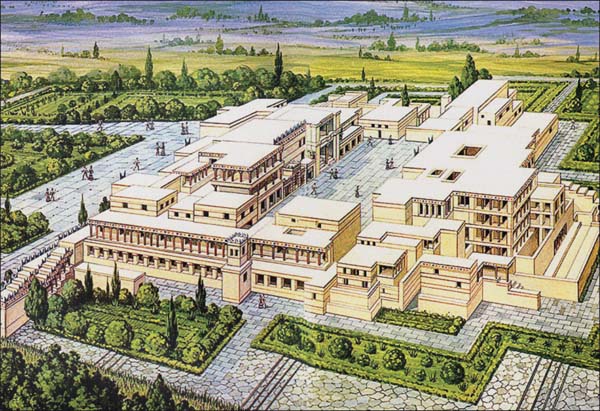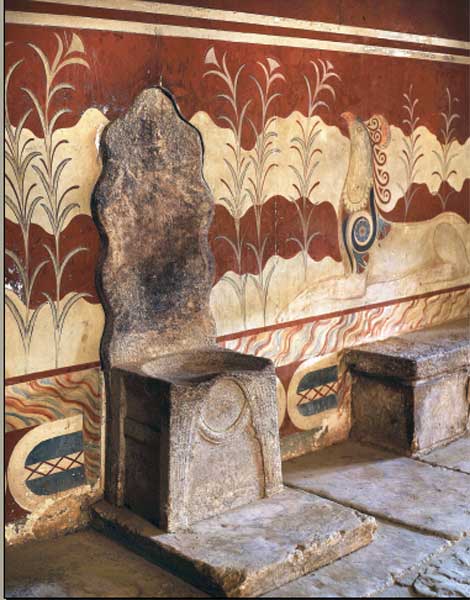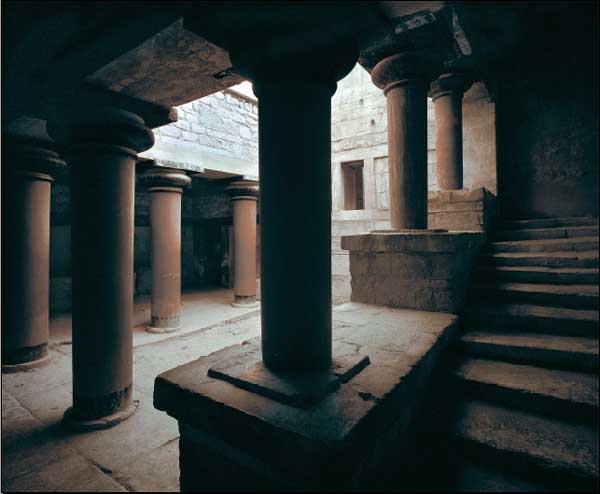The Palace at Knossos
Sidebar to: Did Theseus Slay the Minotaur?


An artist’s reconstruction shows the multi-storied palace at Knossos. Pottery from the palace area enabled archaeologists to identify occupation at the site for almost a millennium: a prepalatial period in the late third millennium B.C. and two subsequent palatial periods, the First Palatial period (1900–1700 B.C.) and the Second Palatial period (1700–1450 B.C.).

The building was constructed around a main open court 82 by 180 feet, which functioned as the center of religious, administrative and commercial activity. With approximately 130 rooms, the palace itself was a veritable labyrinth. Built on the slope of a hill, it reached a height of four to five stories in some areas. The palace also featured elaborate sewage and plumbing systems.
The so-called “Throne of Minos” (it is uncertain whether Knossos had kings) sits amid a griffin fresco in the “Throne Room” of the palace. A lustral basin was found in this room, probably used for purification purposes. This basin and the heraldic griffins, sometimes considered symbols of divinity, suggest that the “throne” may have been used by a priest for religious ceremonies.
Already a library member? Log in here.
Institution user? Log in with your IP address.

